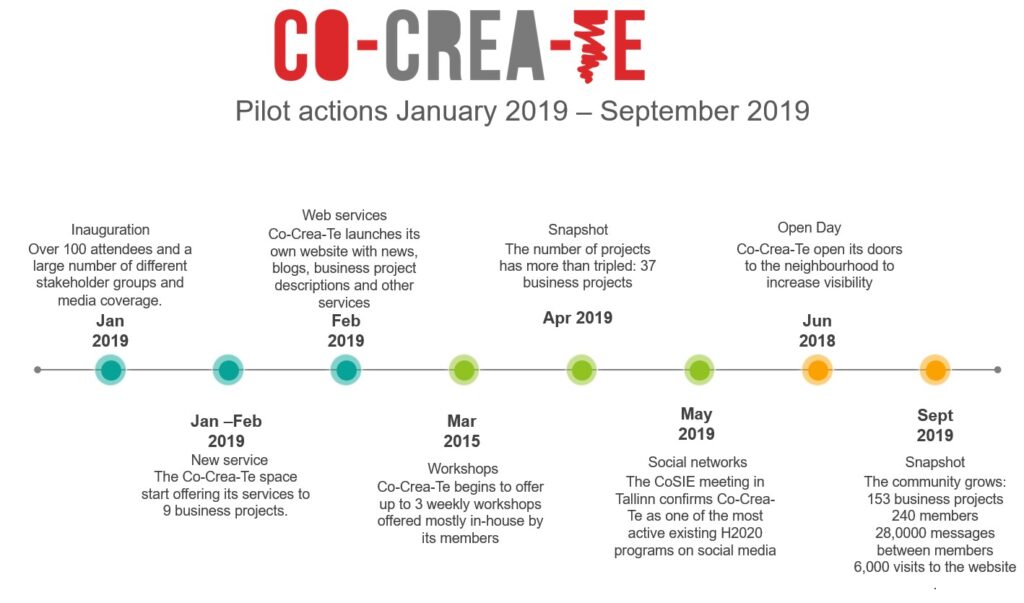The pilot’s understanding of co-creation
The Valencia pilot was based on a process of co-design, co-implementation and co-evaluation between potential users, university, public administration and third sector organisations. Co-Crea-Te provided an opportunity for local administration to take the lead and harness a move towards an e-governance model where citizens lie at the heart of a collaborative process. The pilot aimed that all the elements of the social fabric that surrounds business creation are involved in this.
The original idea of Co-Crea-Te was focused on business start-up with a view to building scalable long-term enterprises. Scalability was dropped as a criterion in favour of economic self-sufficiency. But most importantly, this pilot aims and implementation was shaped through a series of facilitated co-design events in conjunction with Peoples Voice Media.
During the co-design events, participants were given a blank sheet of paper and asked in small groups to draw or symbolise how they saw a business-related service for the unemployed. Once they had done this, and before receiving feedback, pilot actors asked them to look at a list of typical elements in a business training course to consider things they might have forgotten and which should be included in the training. At this point, someone held up their hand and said: But we don’t want any of this – this is the same old stuff that gets churned out on every business course. People end up learning nothing from this.
The direction Co-Crea-Te needed to take in response to stakeholder input in these events can be summed up as:
- Physical space for a co-working
- Small workshop-type groups to nurture skills
- Technicians available to respond to the needs of participants
- Everyone to have a voice in practically everything that occurs in the space
The concept of Co-Crea-Te does not fit easily into the typical classification of co-working spaces. Physically Co-Crea-Te contains all the elements one would expect in a co-working, with a kitchen, sofa area and coffee area and two main areas with work spaces; where entrepreneurs can work in silence and another where the technicians sit, which tends to be a little noisier due to the comings and goings of the members. However, it is also a mixture of an accelerator and an incubator, with mutual support mechanisms to enable people to progress faster, thereby creating a community rather than a mere co-working space.
The format of the projects supported is completely open. They can be one-person projects or teams of five or six with views to employ many more in the future. As new members join, technicians hold a conversation with them, one to one to explain how the space works and to attempt to get them to understand that, although the service is free, they are expected to realise they form a part of a community that is generally under-resourced and therefore mutual support is essential.

UPV research team are participant observers in these meetings, ensuring that their reflections are documented and inform co-evaluation putting the authentic voices of end users at the centre. The decision to use workshops and mentoring instead of a more traditional enterprise training format has been a welcome feature. As one entrepreneur, for example, reports, thanks to the mentors, despite there only being three directly involved in the activities of each of the entrepreneurs, and despite their absences for travel reasons, have helped me to have more confidence, security and clarity on where I am going and how.
Below you will find a pdf from a power-point presentation of the Pilot, and an audio recording about the presentation.